Chapter 1
Tax on split income: CRA provides clarifications on the excluded shares exception
By Alan Roth, Toronto
Background
Recent amendments to the Income Tax Act limit income-splitting arrangements that use private corporations to benefit from the lower personal tax rates of certain family members age 18 or over who are direct or indirect shareholders of the corporation, or who are related family members of direct or indirect shareholders.
The tax imposed under these rules is the tax on split income (TOSI), which is equal to the highest federal marginal personal income tax rate (33% in 2020) multiplied by an individual’s split income (see below) for the year.1
Effective January 1, 2018, the revised TOSI rules limit a family’s ability to share income by expanding the base of individuals subject to the TOSI to include children age 18 and over and other related adults (including spouses and common-law partners, grandparents and grandchildren, but not aunts, uncles, nephews, nieces or cousins) who are residents of Canada at the end of the year and who receive split income.
Split income arises when a stream of income is connected, either directly or indirectly, to a related business.2 A related business generally exists when a related person is active in the business on a regular basis, or owns at least 10% of the fair market value of the shares in a corporation that carries on the business.
In addition, the types of income subject to the TOSI have been expanded under the revised rules to include interest income earned on a debt obligation of a private corporation, partnership or trust (subject to some exceptions), and gains from the disposition of property if income from the property would otherwise be split income. However, income received or gains realized from a related business by certain adult family members may be excluded from the application of TOSI if a number of conditions are met.
For more details, including the available exceptions from TOSI, see “Revised draft legislation narrows application of income sprinkling proposals” in the February 2018 issue of TaxMatters@EY and “Appendix E: The revised tax on split income rules” in Managing Your Personal Taxes 2019-20.
Excluded shares exception
The revised rules left some unanswered questions. For example, the application of TOSI or its available exceptions has not been clear where a family business is carried on through a group of companies that includes a holding company or a related investment company.
Since the revised rules went into effect, the CRA has released many technical interpretations and new guidance (Tax on split income – excluded shares, released in July 2019), which have provided much-needed clarification with respect to the ambiguities in the rules. This guidance and many CRA interpretations have clarified the “excluded shares” exception to the application of TOSI.
The excluded shares exception to the application of TOSI may apply to an adult family member who is 25 or older if all the following conditions are met:
(a) The family member directly owns at least 10% of the shares of the private corporation in terms of “the votes and value” of the corporation.3
(b) The corporation earns less than 90% of its business income from the provision of services, for the last taxation year of the corporation ending at or before the relevant taxation year.
(c) The corporation is not a professional corporation.4
(d) “All or substantially all” (generally at least 90%) of the corporation's income for the relevant taxation year is not derived directly or indirectly from one or more related businesses in respect of the family member, other than the business(es) carried on by the corporation itself.
If these four conditions are met, the shares are referred to as “excluded shares” and any income from, or taxable capital gains from the disposition of, excluded shares would not be subject to TOSI.5 Note that since condition (a) above requires a direct holding of the shares, the excluded shares exception will not apply if private company shares are held indirectly through a family trust. Income earned from such shares that is otherwise split income will be subject to TOSI unless one of the other legislated exceptions applies.
Holding companies and investment holding companies
The other-related-businesses test, noted in (d) above, could result in TOSI applying to income received in certain situations where holding companies are used.
For example, assume an operating company pays a dividend in the year to a holding company (Holdco), which owns 100% of the shares of the operating company. Holdco pays out the dividend it received to Holdco's shareholder, an individual who is at least 25 years old, as a dividend. The operating company is run by the individual's father. Assume the dividend Holdco receives from the operating company represents more than 10% of the total income derived by Holdco for the year.
In this case, the Holdco shares would not qualify as excluded shares, and the dividend received by the shareholder of Holdco could be subject to TOSI (unless it qualifies under at least one of the other exceptions to TOSI) because the dividend would be indirectly derived from another related business6 (other than the business of Holdco, if any) and the Holdco shares would not meet the 90%-or-more test for income not derived from another related business.
The CRA has confirmed in several recent interpretations that the excluded shares exception would generally not include shares of a holding corporation, as all or substantially all of the income would be derived from another related business (other than a business carried on by the holding corporation itself).7
The CRA has also commented on situations involving investment companies. For example, consider a situation where an investment holding company owns passive investments and shares in an operating company carrying on a related business. If the passive investments were funded from the related business, dividends paid from the investments to the investment holding company and then to the shareholders may, in certain circumstances, be considered split income. This is because, under the TOSI rules, at least part of the investment income may be considered to be derived directly or indirectly from a related business in respect of the shareholders if, for instance, the investment holding company also received income in that year from the operating company.8
The CRA has stated that if the investment holding company in this situation “carries on a business,” the purpose of which is to derive income from property (e.g., earning interest and/or dividend income from passive investments), then the dividends paid to the shareholders could be derived from the investment holding company’s own business instead of the related business carried on by the operating company. Therefore, if 90% or more of the investment holding company’s income for the last taxation year that ends before the dividend is paid is income generated from the passive investments and the other conditions are met for the excluded shares test, then the income received by the shareholders would not be subject to the TOSI, since the excluded shares exception would apply.9
(In contrast, if more than 10% of the investment holding company’s income for that year was received from the operating company, then that 90% test would not be met and the excluded shares exception would not apply.)
The CRA cautioned that “the question of whether or not a corporation is carrying on a business whose purpose is to earn income from interest and dividends is a question of fact that can only be resolved following an exhaustive analysis of all the present facts and circumstances in relation to a given situation”10.
Another CRA document looked at a similar structure where Holdco sold the shares of the operating company in year 1 and used the sale proceeds to purchase investments from which it then earned income. The investment income was then paid each year as a dividend to Holdco’s shareholder.
In this scenario, the CRA confirmed that as of year 3, Holdco’s shareholder could benefit from the excluded shares exception on the dividend income received from Holdco because Holdco would no longer be considered to have derived income from a related business in respect of the shareholder. This would not be the case in years 1 and 2 because the other-related-businesses test in the excluded shares exception (see above) refers to “the relevant taxation year” in respect of the 90%-or-more test for income not derived from a related business.
The relevant taxation year for purposes of this scenario is the last taxation year ending before the time when a dividend is paid by Holdco to its shareholder. In other words, it is the taxation year preceding the one in which the dividend is paid. Therefore, in both years 1 and 2, any dividends paid by Holdco to its shareholder would not benefit from the excluded shares exception because in each case the operating company paid dividends to Holdco in the preceding year such that Holdco’s income was derived from a related business in respect of the shareholder in those preceding years. By year 3, however, there is ultimately no longer a related business in respect of the shareholder for income to be derived from.11
There may be only very limited opportunities in which the TOSI may be avoided with respect to an investment holding company if the income is not derived from the company’s own business. Generally, unless the shareholder was actively employed in the business that financed the investments owned by the holding company such that the income is from an “excluded business” (and therefore excluded from the application of TOSI), then the shareholder would need to be able to meet the “reasonable return” test or one of the other exclusions from TOSI. The reasonable return test may not be met if the shareholder contributed nominal capital to the holding company.
For more details on these two exceptions from TOSI, see “Revised draft legislation narrows application of income sprinkling proposals” in the February 2018 issue of TaxMatters@EY and “Appendix E: The revised tax on split income rules” in Managing your Personal Taxes 2019-20.
Service companies
The CRA’s July 2019 guidance, Tax on split income – excluded shares, and several recent technical interpretations focus primarily on condition (b) above (the test requiring a corporation to earn less than 90% of its business income from the provision of services) that must be met for shares to be considered excluded shares. The guidance confirms that the test refers to gross business income (e.g., sales revenue) earned in the previous taxation year, unless the business is in its first year of operation, in which case the test would be based on the current taxation year for that first year.
The guidance also states that if a corporation derives its business income from the provision of both services and non-services (e.g., a business carried on by plumbers, mechanics or other contractors that also includes the sale of replacement parts or materials), the income from the provision of non-services will generally be taken into account for purposes of condition (b) unless that income can reasonably be considered to be necessary but incidental to the provision of the services.12
Therefore, if incidental goods or materials are used in the provision of services, their cost would not be subtracted in calculating the percentage of business income attributable to services. If goods are provided with a service and the goods are not incidental to the service because they are sold separately for use by the customer, the sale price allocated to the goods is not included as service income in applying the business income test.
The following example, based on an example provided in the guidance, illustrates these points.
Example: Clean Home Inc.
Jordana and Leslie are spouses, both over age 25, who each own 50 common shares of Clean Home Inc. There are no other shareholders. Clean Home operates a residential cleaning business. Jordana is actively involved in the management of the company’s operations on a full-time basis, while Leslie works full-time in his legal practice. In addition to providing cleaning services to their customers, Clean Home also sells floor wax, mops and window cleaner separately to people who do not use Clean Home’s cleaning services, as well as to customers when they are purchasing cleaning services. In 2018, Clean Home Inc.’s gross revenue was $750,000 and was made up of the following sources:
- Sales of home cleaning services: $600,000
- Sales of cleaning supplies to customers who purchase cleaning services: $100,000
- Sales of cleaning supplies to other customers: $50,000
Neither Jordana nor Leslie will be subject to the TOSI on the dividend income received in 2019 because they both meet the excluded shares exception. Both spouses are at least 25 years of age and own at least 10% of the company’s shares on a votes and value basis. The company is not a professional corporation and none of the company’s sales are derived from any related businesses. Less than 90% of Clean Home’s sales are from the provision of services (since 80% ($600,000/$750,000) is derived from cleaning services and the balance is earned from the sale of goods) and, therefore, that condition for the excluded shares exception is also met.In 2019, Clean Home paid dividends to both Jordana and Leslie.
The sale of floor wax, mops and window cleaner is not incidental to the provision of services, since they were either sold separately or, if sold with a cleaning service, were distinct and separate from the cleaning service. Therefore, $150,000 of total sales in 2018 is not included in the service part of gross business income.
In contrast, cleaning products used by Clean Home in the course of providing the home cleaning service are considered incidental to the service provided and, therefore, the cost of these products would not be subtracted from the service part of gross sales. This would still be the case if an amount for the cleaning products was listed separately on the invoice for cleaning services, or on a separate invoice.
In this example, Jordana also meets the excluded business exception from the TOSI, since she is actively engaged in the business on a regular, continuous and substantial basis.
Conclusion
The application of the revised TOSI rules to common business structures such as family trusts and investment holding companies is somewhat ambiguous based on the wording of the legislation. The CRA’s July 2019 guidance and technical interpretations have provided much-needed clarifications.
The revised rules are still quite complex, however, so care needs to be taken in applying them to a particular situation.
For additional guidance on the application of the revised TOSI rules and the available exceptions, consult with your EY Tax advisor.

Chapter 2
Check out our helpful online tax calculators and rates
Lucie Champagne, Alan Roth and Candra Anttila, Toronto
EY Canada 2020 Personal tax calculator
Frequently referred to by financial planning columnists, our mobile-friendly 2020 Personal tax calculator is found at ey.com/ca/taxcalculator.
This tool lets you compare the combined federal and provincial 2020 personal income tax bill in each province and territory. A second calculator allows you to compare the 2019 combined federal and provincial personal income tax bill.
You'll also find our helpful 2020 and comparative 2019 personal income tax planning tools:
- An RRSP savings calculator showing the tax saving from your contribution
- Personal tax rates and credits by province and territory for all income levels
In addition, our site offers you valuable 2020 and comparative 2019 corporate income tax planning tools:
- Combined federal-provincial corporate income tax rates for small business rate income, manufacturing and processing income, and general rate income
- Provincial corporate income tax rates for small business rate income, manufacturing and processing income, and general rate income
- Corporate income tax rates for investment income earned by Canadian-controlled private corporations and other corporations
Check out the 2020 Personal tax calculator today at ey.com/ca/taxcalculator
You'll find these useful resources and several others — including our latest perspectives, thought leadership, Tax Alerts, up-to-date 2020 budget information and much more — at ey.com/ca/tax.

Chapter 3
Employee cannot deduct assistant and accounting/bookkeeping expenses
Lagace v The Queen, 2019 TCC 249
By Winnie Szeto, Toronto
In this informal procedure case, the Tax Court of Canada (TCC) found that an employee could not deduct amounts paid to her spouse to be her assistant. Other amounts paid for accounting and automobile expenses were also found not to be deductible.1
Facts
The taxpayer was an employee of a large US-based multinational manufacturer of dental instruments and products. She was the Canadian country manager who oversaw the Canadian sales force and operations for her employer. The taxpayer travelled extensively and regularly throughout the year because her employer did not have a Canadian office and had sales representatives, dealers and customers throughout Canada.
In 2015, the taxpayer had employment income of just under $200,000 and she claimed employment-related expenses of over $80,000. Almost half of these expenses were in respect of her husband’s role as her assistant. The taxpayer was not paid on a commission basis.
For the 2015 taxation year, the taxpayer’s employer provided her with a Form T2200, Declaration of Conditions of Employment. This form is required for an employee to deduct employment expenses from their income.
Form T2200 indicated that the taxpayer:
- Was required to incur expenses for her travel throughout Canada
- Spent 80% of her time away from her home office
- Was provided with a car allowance
- Was reimbursed for employment-related mileage
- Charged almost $100,000 of her travel expenses directly to her employer by credit card or similar means
- Was reimbursed more than $8,000 for out-of-pocket travel expenses upon proof of payment
- Was required to employ an assistant and pay for work-related supplies, as required by her employment contract
The taxpayer also provided the court with a letter dated December 2014 from her employer that accompanied a revised Form T2200 for 2012. That letter stated that the taxpayer:
… is responsible for overseeing the activities of a number of sales representatives. If she believes she requires an administrator or other assistance to perform her duties, this is her decision. We do not, as company policy, fund the expense of engaging an assistant. We have amended the T2200 (copy attached) to reflect that [the taxpayer] employs someone to assist her with her job duties. At part 9, we have changed “paid for a substitute assistant” from “No” to “Yes”. [emphasis added by the court]
That letter also stated:
… the company pays for any costs associated with travel, meals and entertainment. These amounts have not been included in her T4 as they were paid directly by us. It should be noted that any other costs other than the amounts declared in Box 6 (travel) and Box 5 (auto contribution) are her responsibility. [emphasis added by the court]
For the 2015 taxation year, the CRA disallowed the taxpayer’s claims of employee expenses relating to:
- Hiring her husband as her assistant
- Accounting/bookkeeper fees
- Certain automobile-related supplies
- Supplies used in the course of her employment
The taxpayer appealed these disallowed claims to the TCC.
TCC decision
Expense of an assistant
With respect to the taxpayer’s hiring of her husband as her assistant, the TCC found that such expenses should not be allowed. The TCC noted that subparagraph 8(1)(i)(ii) of the Income Tax Act2 (the Act) allows a deduction for “salary” paid to an assistant if the payment was required by the taxpayer’s employment contract. It further noted that the term “salary” is defined in subsection 248(1) as income from an office or employment. The court concluded that the husband was not an employee of the taxpayer because:
- He charged her an annual hourly fee for his services, which he reported as professional income against which he claimed almost 75% in expenses.
- He remitted GST/HST on the amount.
- No income tax, Canada Pension Plan or Employment Insurance withholdings were withheld on the amounts, as is normally required for income from an office or employment.
Based on the above, the court found that subparagraph 8(1)(i)(ii) did not apply to the payment made to the taxpayer’s husband.
Furthermore, the TCC found additional reasons why the taxpayer’s claim should be disallowed:
- As indicated in the December 2014 letter from her employer that accompanied a revised Form T2200 for 2012, she was not required by the contract of her employment to hire an assistant; therefore, the requirement in subparagraph 8(1)(i)(ii) that the payment must be required by the taxpayer’s employment contract would not be satisfied.
- The taxpayer never actually paid her husband the amount claimed because they simply had a single joint account from which either could withdraw and deposit into; this arrangement cannot be considered to be payment in normal circumstances.
- The TCC found that the hourly rate of $75 for the mainly clerical, secretarial and transportation duties performed by the taxpayer’s husband was unreasonable.
- The husband’s total hours charged from his monthly accounting records were inconsistent with his billings to his wife.
Accounting/bookkeeping expenses
The TCC found that the taxpayer’s accounting or bookkeeping expenses should also not be allowed. The TCC noted that paragraph 8(1)(i) of the Act does not specifically permit a deduction by an employee of accounting or bookkeeping expenses. The court also noted that while such expenses may be deductible under paragraph 8(1)(f), that provision only applies to employees who are paid at least in part by commission, and therefore would not assist the taxpayer because she was not paid by commission.
Automobile expenses and supplies
The disputed automobile expenses related to fuel, repair and maintenance, and parking and tolls, although a portion of her repair and maintenance claim and all of her parking claim was allowed on objection.
With respect to the taxpayer’s claim for fuel costs, the court noted that her claim was not substantiated with receipts and her log was unreliable or inaccurate. As a result, her claim for additional fuel costs was not allowed.
The taxpayer’s remaining claim for repair and maintenance related to her purchase of an extended service plan from the dealer when she purchased her car in 2015. While the court noted that the extended service plan contract was unclear as to what portion of the total cost related to regular maintenance and what portion should be considered more of an extended warranty, the court accepted that one half of the cost was 90% deductible. (The taxpayer estimated that 90% of her car was used for employment purposes.)
The court also allowed the taxpayer’s claim of 90% of highway toll charges, the total of which matched the amount indicated on her 2015 highway toll bill.
Finally, the court allowed the taxpayer’s claim of expenses for supplies, which were substantiated with receipts.
Lessons learned
This case serves to reiterate several important themes in respect of the deduction of employee expenses.
The first is that the information contained in Form T2200 is of the utmost importance in supporting an employee’s expense claims, so care should be taken to ensure that the information contained therein accurately reflects the facts and is understood by both employer and employee.
The second is that the reasonability of an expense claim should not be overlooked. Supporting evidence as to the reasonability of an expense should be readily available.
Finally, receipts and accurate records are required to substantiate expense claims. Vague, inaccurate, unreliable, inconsistent or non-existent supporting documents are simply not adequate.
With respect to the deductibility of expenses, it’s always a good idea to obtain professional tax advice as to whether a certain type of expense is deductible in a particular situation. Income tax laws are often complex and difficult for taxpayers to navigate unassisted.
Note that this is an informal procedure case, which means that the results of this case are not binding on the CRA or any other court, even where the facts are very similar. However, informal procedure decisions often have influential value for other judges.

Chapter 4
Recent Tax Alerts – Canada
Tax Alerts cover significant tax news, developments and changes in legislation that affect Canadian businesses. They act as technical summaries to keep you on top of the latest tax issues.
Tax Alert 2020 No. 2 – Canadian CUSMA ratification begins anew
On 29 January 2020, the Canadian Government tabled Bill C-4, Canada-United States-Mexico Agreement Implementation Act. The bill must now pass the required readings in both the House of Commons and the Senate and then receive Royal Assent.
Summary
For more information on EY’s tax services, visit us at https://www.ey.com/en_ca/tax. For questions or comments about this newsletter, email Tax.Matters@ca.ey.com.


